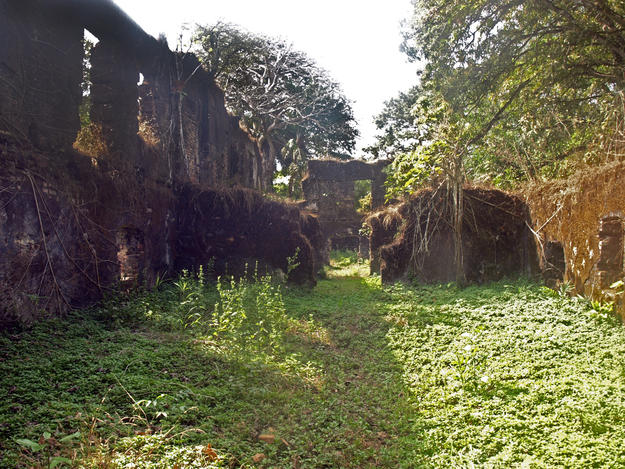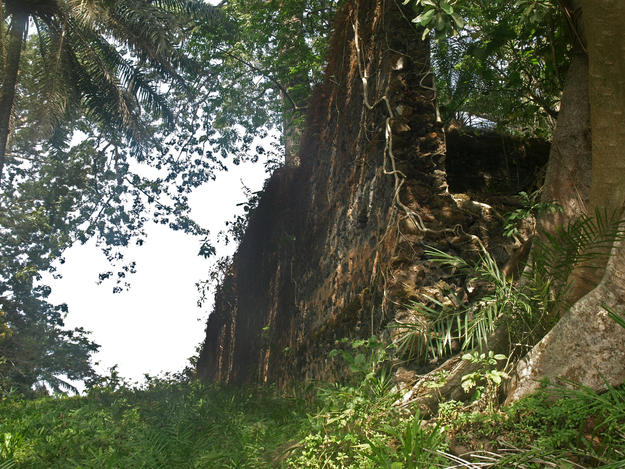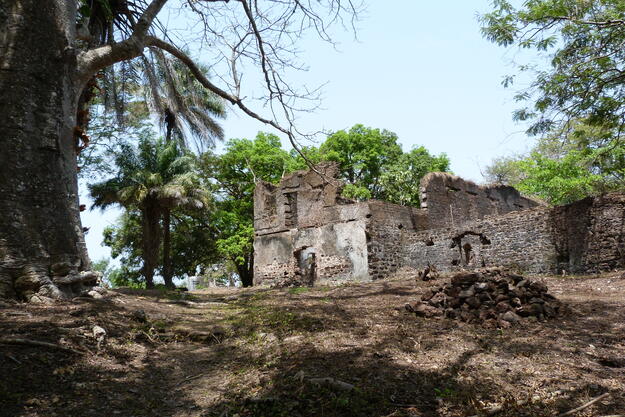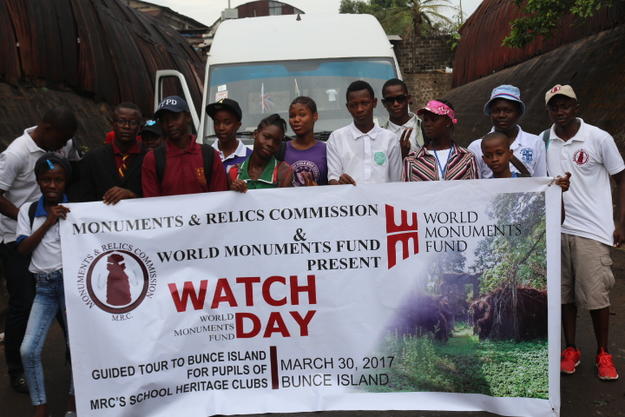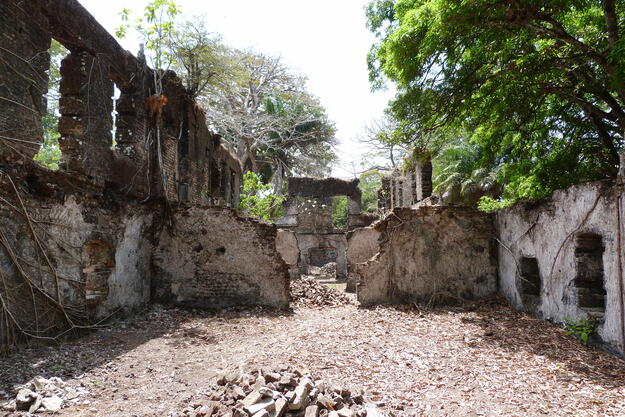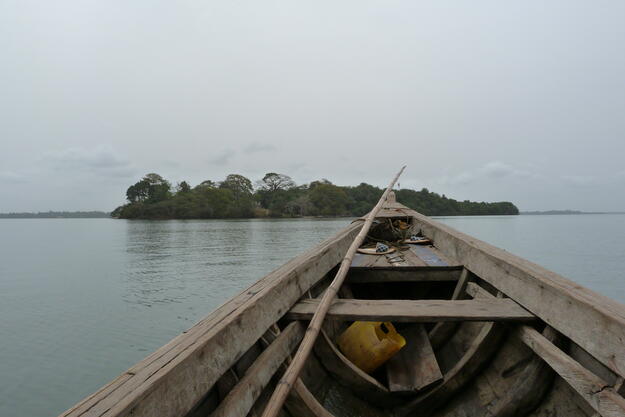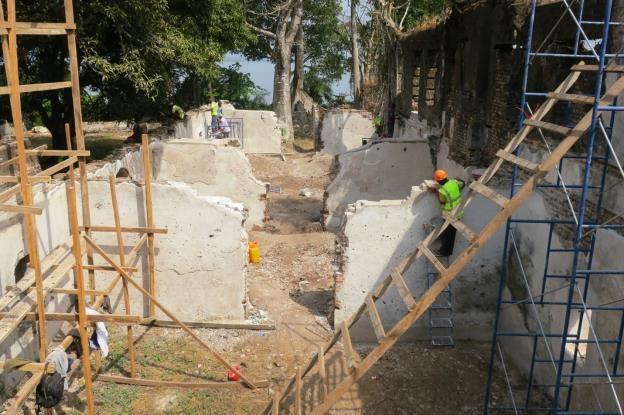Bunce Island
Site History and Significance
A Monument to Africa's Intersection with the Atlantic World
Located in the Sierra Leone River, a few miles north of Freetown, Bunce Island was home to one of the most lucrative slave trading operations in West Africa. Between the late sixteenth century and 1807, when it was outlawed by the British government, hundreds of thousands of West Africans became victims of the slave trade. From Bunce Island, the furthest point upriver that was accessible to commercial ships, slaves were sold to colonies in the West Indies and North America. The rice-growing skills of Africans from the west coast commanded high prices from rice plantation owners in North America. In recent years, studies have revealed clear connections between the linguistic traits and cultural traditions of the Gullah people in the U.S. states of Georgia and South Carolina and the people of Sierra Leone.
As was also the case at other sites in West Africa, European companies erected a fortified trading post with ancillary buildings, referred to as a slave castle, on the uninhabited Bunce Island. The structures that remain, including bastions, walls of the merchants’ quarters, the gunpowder magazine, and the gate to the slave house, were constructed of local stones and imported brick. Although the isolation of the island has helped prevent much human destruction, the severe local climate has resulted in ongoing degradation from the elements. Uncontrolled growth of vegetation in and around the ruins and coastal erosion threaten the preservation of the site. Additionally, conflict and a weak economy that is still recovering from the effects of the 2014 Ebola epidemic hampered plans for the preservation of Bunce Island.
Our Involvement
2016 World Monuments Watch
The Monuments and Relics Commission of Sierra Leone has worked with local organizations to develop a multi-year project that includes extensive archaeological, oceanographic, and geotechnical studies, as well as stabilization and conservation work on Bunce Island. The project would honor the significance of the island through the creation of a museum in Freetown and through educational outreach programs for local schools and community members aimed at developing a national consciousness surrounding the history of slavery in Sierra Leone. The 2016 World Monuments Watch recognizes that the historic and social significance of Bunce Island transcends national and regional boundaries. The island is testimony to a transformative and traumatic period in local history, yet remains as a standing monument to Africa’s intersection with the U.S. and the wider Atlantic world.
Watch Day
Watch Day was celebrated on Bunce Island on March 30. Students from School Heritage Clubs in Freetown visited the island with a team from the Monuments and Relics Commission. The heritage clubs were created to breach the gap in heritage education in Sierra Leone by raising awareness of the significance of cultural heritage, beginning at a young age. For Watch Day, students had the opportunity to see the site for the first time, after learning about it at school.
Since the Watch
In the summer of 2016, the Monuments and Relics Commission of Sierra Leone organized a three-day workshop for 40 youths from neighboring communities. The program, funded by the International National Trust Organization (INTO), aimed to raise awareness about the significance of the island and the potential socio-economic benefits of its preservation. In 2017, WMF was awarded a grant from the Ambassadors Fund for Cultural Preservation to enable the completion of documentation and stabilization efforts at Bunce Island, in partnership with the local Monuments and Relics Commission.
This project was completed in July 2020. In addition to the stabilization of standing ruins, WMF's work included the installation of visitor infrastructure, educational outreach and community engagement, and local conservation capacity building.
Google Arts & Culture
Bunce Island is featured in a collection of immersive Google Arts & Culture exhibits entitled The Black Atlantic. To view the exhibits related to Bunce Island, click here.
Learn More
World Monuments Fund safeguards cultural heritage around the globe, ensuring our treasured places are preserved for present and future generations.
Sign up for our newsletter to receive regular updates on our projects, stories from the field, upcoming events, and more!
World Monuments Fund’s work at Bunce Island has been made possible, in part, by support from the U.S. Ambassadors Fund for Cultural Preservation (AFCP) and U.S. Embassy Freetown.

